

Little Mermaid

The Little Mermaid
The statue of The Little Mermaid (Den lille havfrue in Danish) sits on a rock in the Copenhagen harbor at Langelinie. This small and unimposing statue is a Copenhagen icon and a major tourist attraction.

The statue was commissioned in 1909 by Carl Jacobsen, son of the founder of
Carlsberg, who had been fascinated by a ballet about the fairytale in
Copenhagen’s Royal Theatre and asked the primaballerina, Ellen Price, to model
for the statue. The sculptor Edvard Eriksen created the statue, which was
unveiled on 23 August 1913. The statue’s head was modeled after Price, but as
the ballerina did not agree to model in the nude, the sculptor’s wife Eline
Eriksen was used for the body.

The relatively small size of the statue typically surprises tourists visiting
for the first time. The Little Mermaid statue is only 1.25 metres high and
weighs around 175 kg.
The Fairy Tale
The Little Mermaid (Danish: Den lille havfrue) is a fairy tale by the Danish poet and author Hans Christian Andersen about a young mermaid willing to give up her life in the sea and her identity as a merperson to gain a human soul and the love of a human prince. The tale was first published in 1837 and has been adapted to various media including musical theater and animated film.
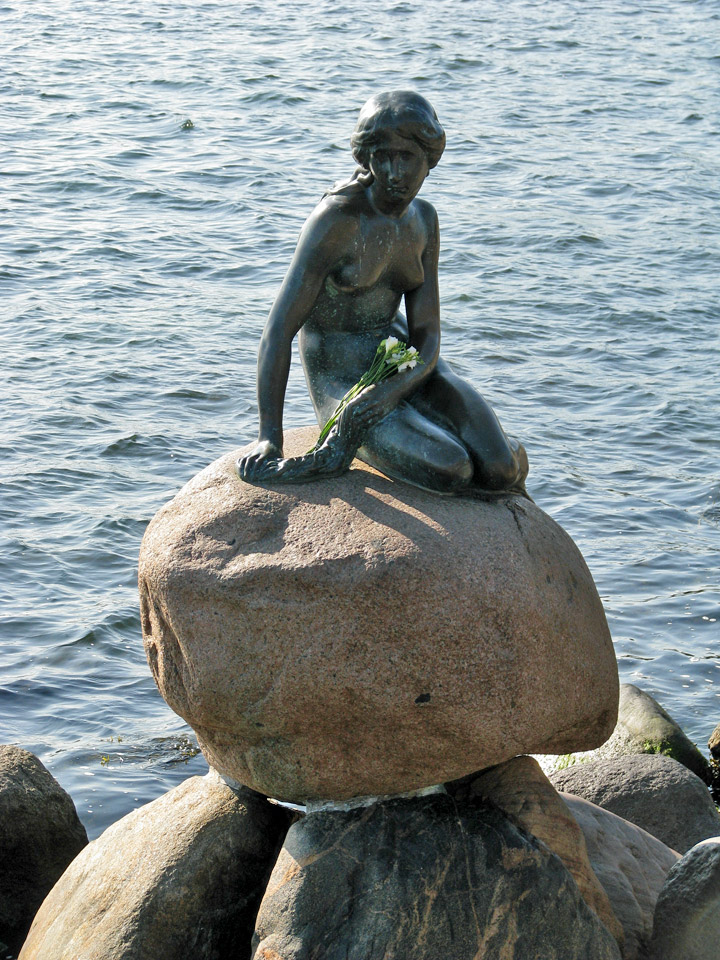
The Little Mermaid lives at the sea bottom with her father the sea king; her
grandmother; and her five elder sisters, born one year apart. When a mermaid
turns 15, she is allowed to swim to the surface to watch the world above, and as
the sisters become old enough, one of them visits the surface every year. As
each of them returns, the Little Mermaid listens longingly to their descriptions
of the surface and of human beings.
When the Little Mermaid's turn comes, she ventures to the surface, sees a ship
with a handsome prince, and falls in love with him from a distance. A great
storm hits, and the Little Mermaid saves the prince from a near-drowning. She
delivers him unconscious to the shore near a temple. Here she waits until a
young girl from the temple finds him. The prince never sees the Little Mermaid.
The Little Mermaid asks her grandmother whether humans can live forever if they
do not drown. The grandmother explains that humans have a much shorter lifespan
than merfolk's 300 years, but that when mermaids die they turn to sea foam and
cease to exist, while humans have an eternal soul that lives on in Heaven. The
Little Mermaid, longing for the prince and an eternal soul, eventually visits
the Sea Witch, who sells her a potion that gives her legs, in exchange for her
tongue; the Little Mermaid has the most intoxicating voice in the world.
Drinking the potion will make her feel as if a sword is being passed through
her, and walking on her feet will feel like walking on knives. In addition, she
will only get a soul if the prince loves her and marries her, for then a part of
his soul will flow into her. Otherwise, at dawn on the first day after he
marries another woman, the Little Mermaid will die brokenhearted and turn to sea
foam.
The Little Mermaid drinks the potion and meets the prince, who is attracted to
her beauty and grace even though she is mute. Most of all he likes to see her
dance, and she dances for him despite her excruciating pain. When the prince's
father orders his son to marry the neighboring king's daughter, the prince tells
the Little Mermaid he will not, because he does not love the princess. He goes
on to say he can only love the young woman from the temple, but adds that the
Little Mermaid is beginning to take the temple girl's place in his heart. It
turns out that the princess is the temple girl, who had been sent to the temple
to be educated. The prince loves her and the wedding is announced.
The prince and princess marry, and the Little Mermaid's heart breaks. She thinks
of all that she has given up and of all the pain she has suffered. She despairs,
but before dawn, her sisters give her a knife that the Sea Witch has given them
in exchange for their hair. If the Little Mermaid slays the prince with the
knife, she will become a mermaid again and live out her full life.
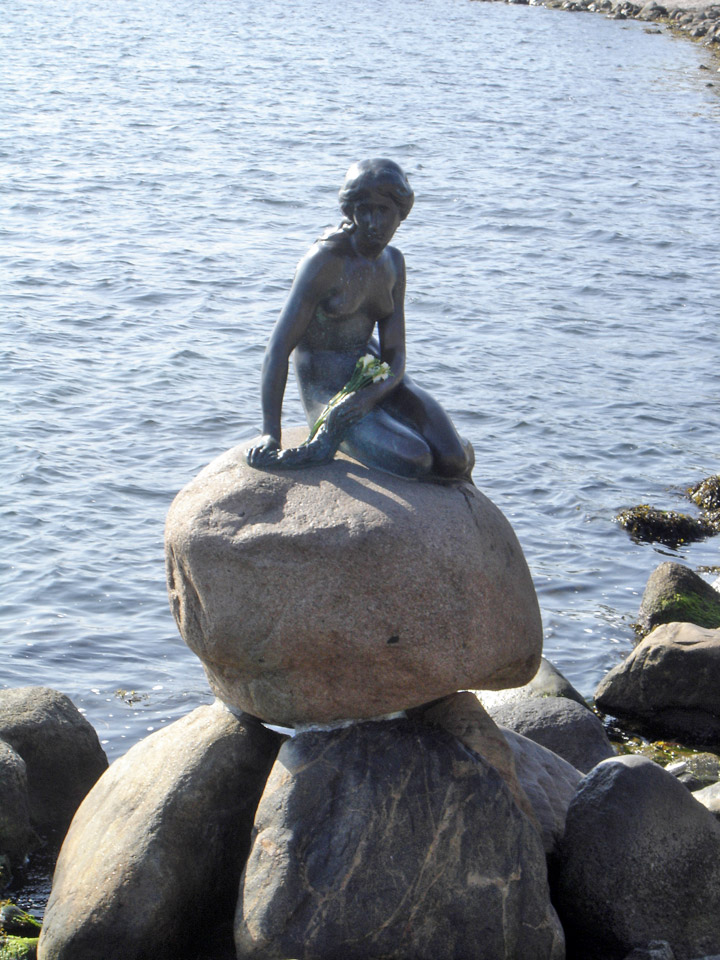
The Little Mermaid cannot bring herself to kill the sleeping prince lying with
his bride and, as dawn breaks, throws herself into the sea. Her body dissolves
into foam, but instead of ceasing to exist, she feels the warmth of the sun; she
has turned into a spirit, a daughter of the air. The other daughters of the air
tell her she has become like them because she strove with all her heart to gain
an eternal soul. She will earn her own soul by doing good deeds, and she will
eventually rise into the kingdom of God.
Text from Wikipedia
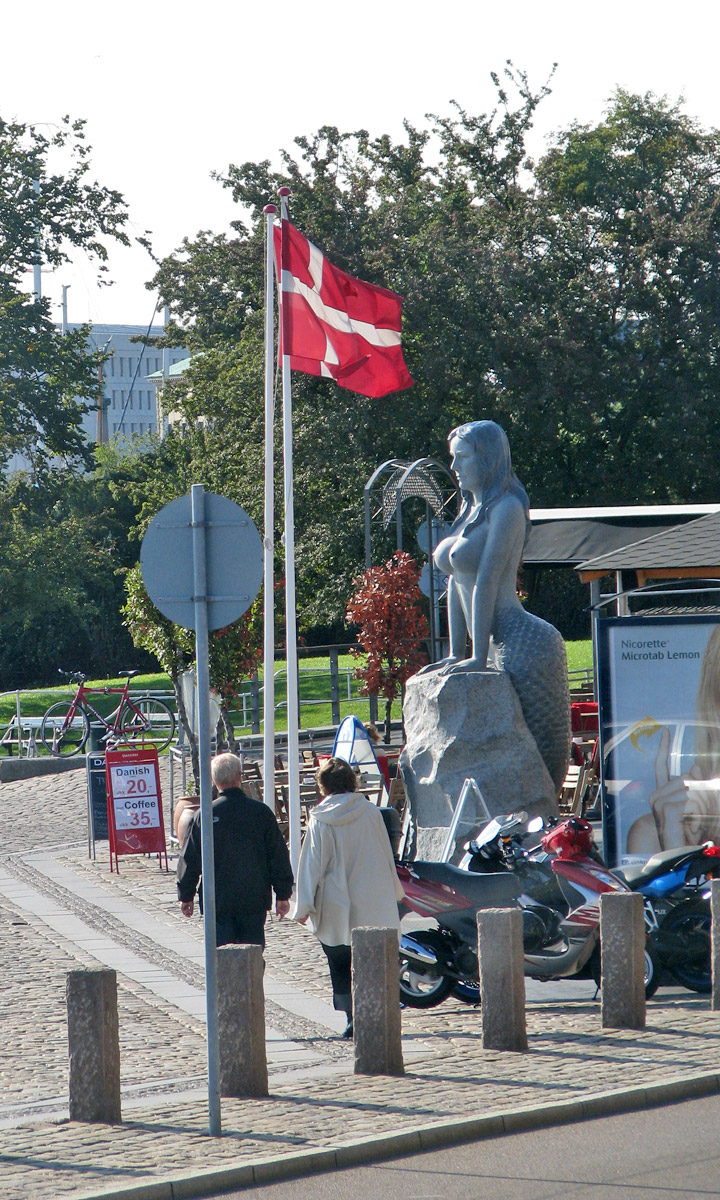
entering the park created for the Little Mermaid
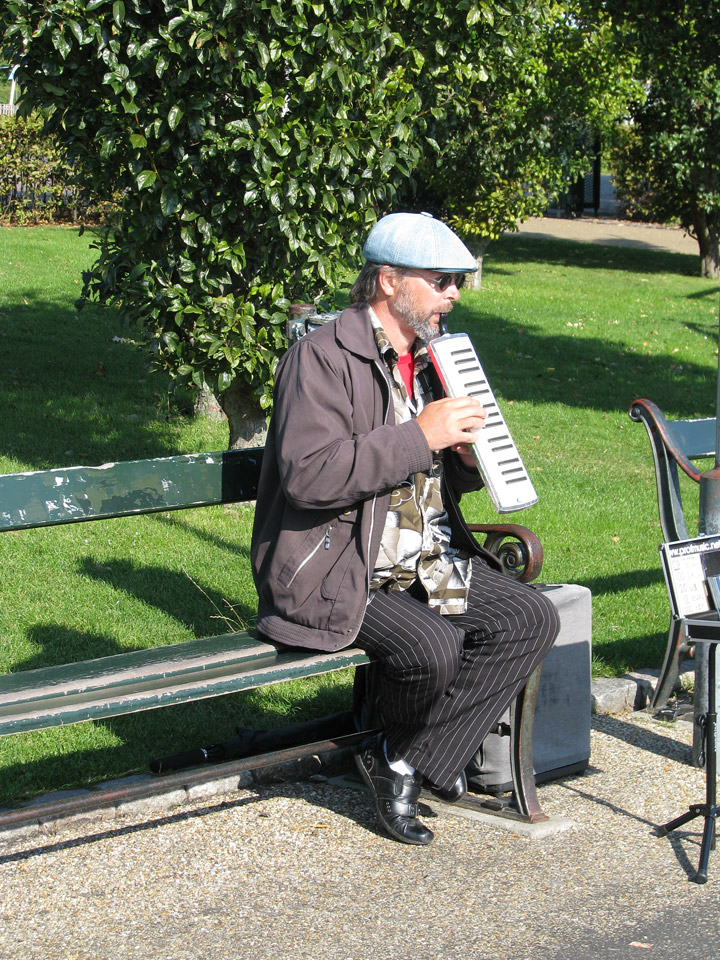
busker in the park
Busking is the practice of performing in public places for tips and gratuities. People engaging in this practice are called buskers
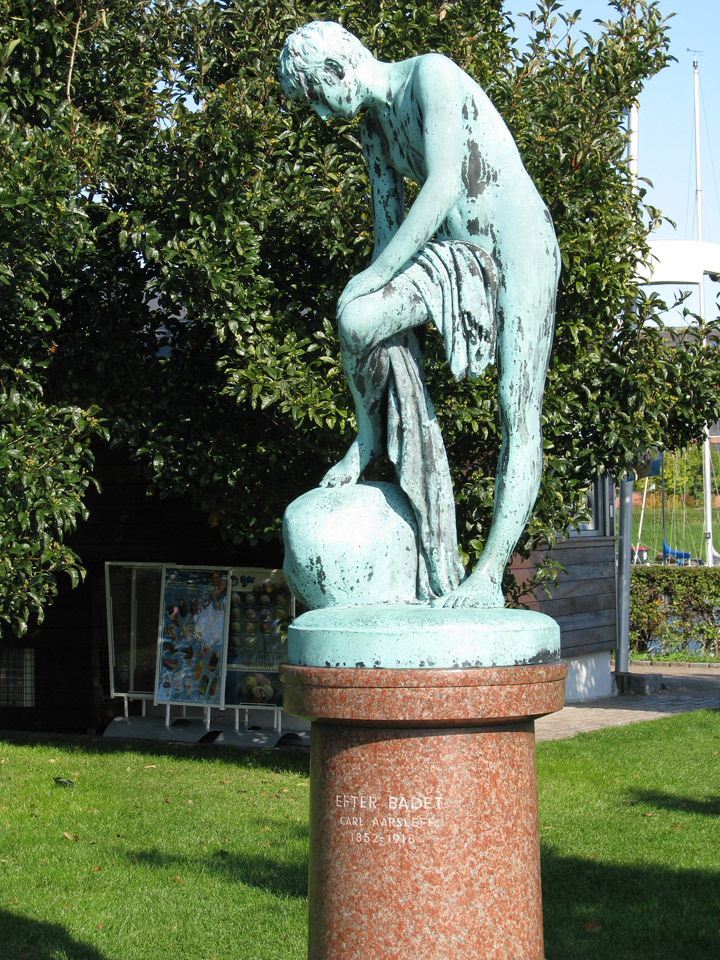
another statue in the park
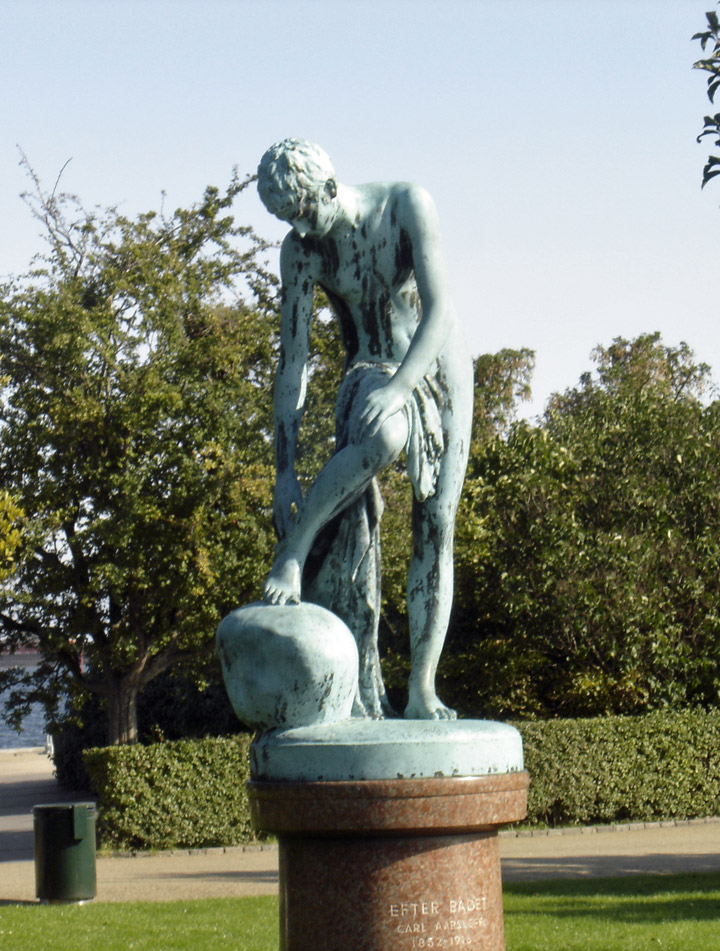
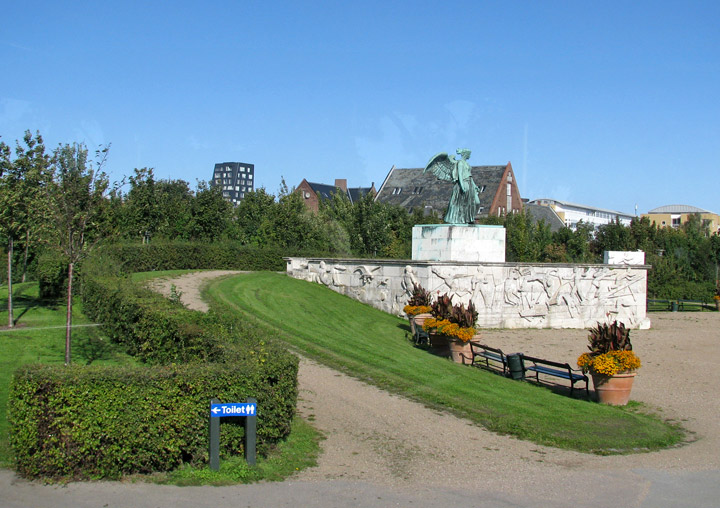
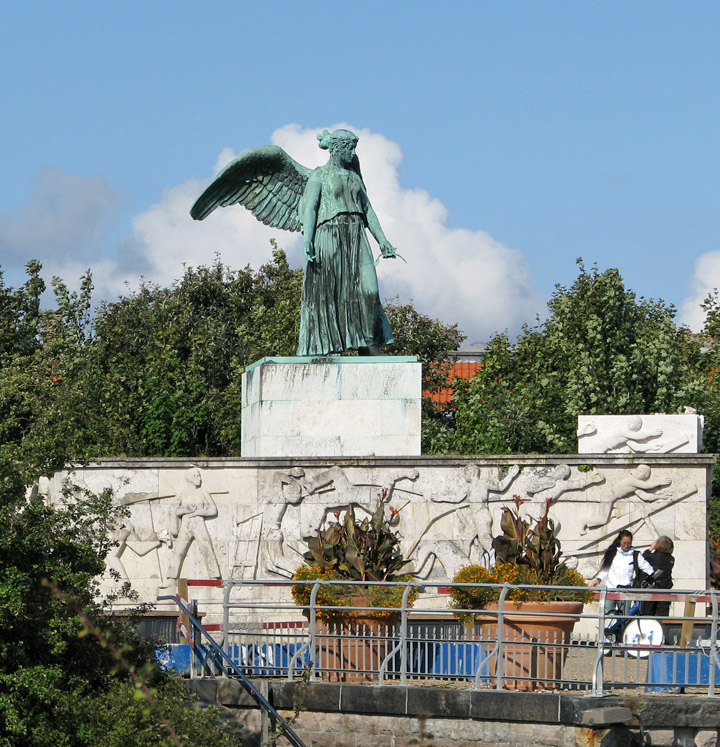
Gefion Fountain
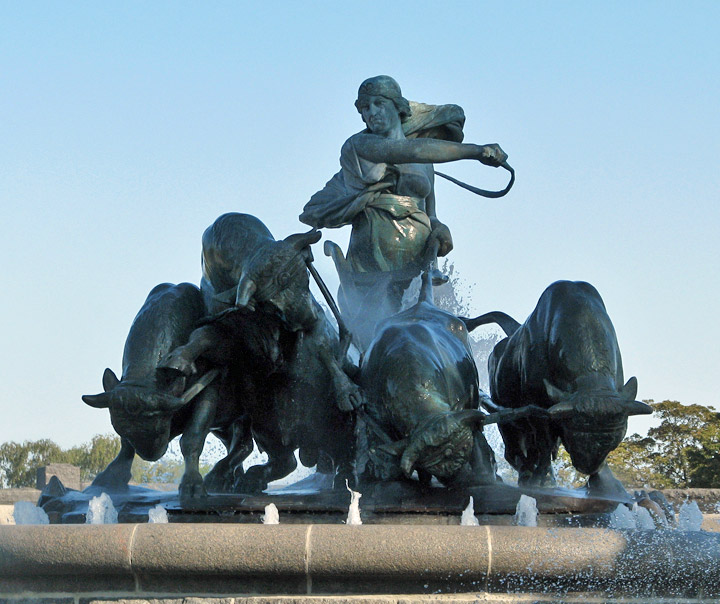
The Gefion fountain (Danish:
Gefionspringvandet) is a large fountain on the harbor front in Copenhagen,
Denmark. It features a large-scale group of animal figures being driven by the
legendary Norse goddess, Gefjun.
It is the largest monument in Copenhagen and is used as a wishing well. The
fountain was donated to the city of Copenhagen by the Carlsberg Foundation on
the occasion of the brewery’s 50-year anniversary. It was originally supposed to
be located in the main town square outside city hall, but it was decided instead
to build it near the Øresund in its current location near Kastellet ("The
Citadel").
It was designed by Danish artist Anders Bundgård, who sculpted the naturalistic
figures 1897-99. The basins and decorations were completed in 1908. The fountain
was first activated on July 14, 1908.

The fountain depicts the mythical story of the creation of the island of Zealand
on which Copenhagen is located. The legend appears in Ragnarsdrápa, a 9th
century Skaldic poem recorded in the 13th century Prose Edda, and in Ynglinga
saga as recorded in Snorri Sturluson's 13th century Heimskringla.
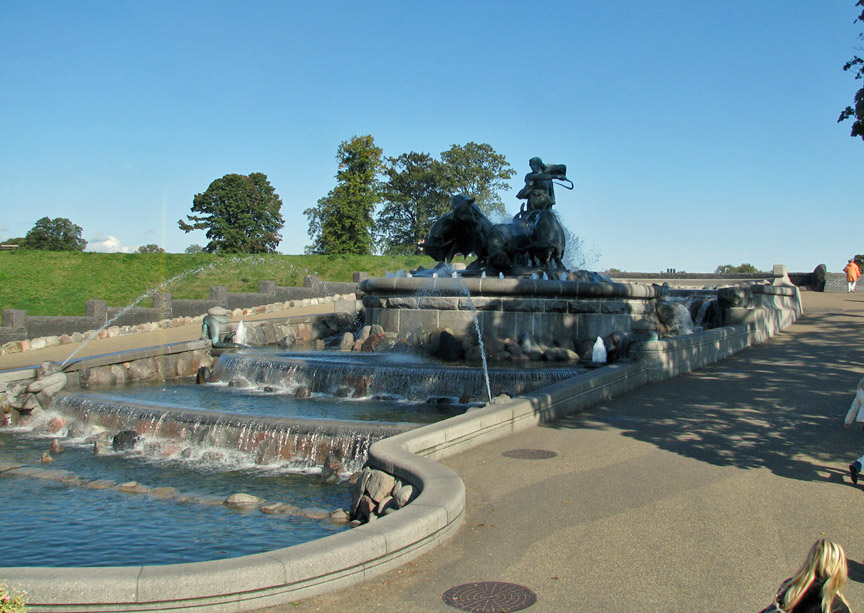
According to Ynglinga saga, the Swedish king Gylfi promised Gefjun the territory
she could plow in a night. She turned her four sons into oxen, and the territory
they plowed out of the earth was then thrown into the sea between Sweden and the
island of Fyn in Denmark. The hole became a lake called Lögrinn and Leginum
(locative). Snorri identifies the lake Löginn, as the lake of Old Sigtuna west
of Stockholm, i.e., Lake Mälaren, an identification that he returns to later in
the Saga of Olaf the Holy. The same identification of Löginn/Leginum as Mälaren
appears in Ásmundar saga kappabana, where it is the lake by Agnafit (modern
Stockholm), and also in Knýtlinga saga.
Text from Wikipedia